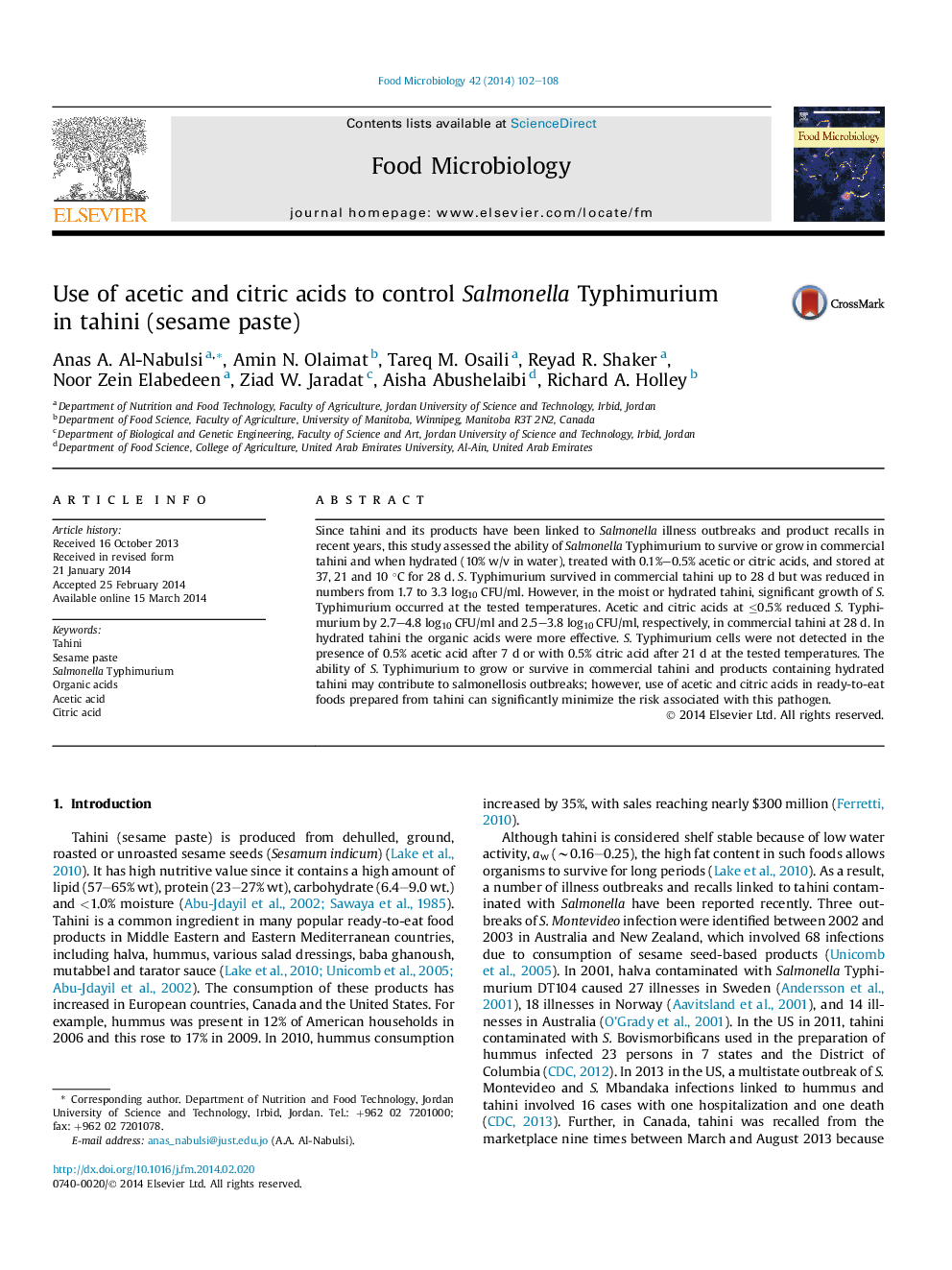| Article ID | Journal | Published Year | Pages | File Type |
|---|---|---|---|---|
| 4362888 | Food Microbiology | 2014 | 7 Pages |
•Salmonella Typhimurium survived in commercial tahini and grew in hydrated tahini up to 28 d.•≤0.5% acetic acid reduced S. Typhimurium by 2.5–4.8 log10 CFU/g in tahini at 28 d.•≤0.5% citric acid reduced S. Typhimurium by 2.5–3.8 log10 CFU/g in tahini at 28 d.•S. Typhimurium was not detected in hydrated tahini with 0.5% acetic acid after 7 d.•S. Typhimurium was not detected in hydrated tahini with 0.5% citric acid after 21 d.
Since tahini and its products have been linked to Salmonella illness outbreaks and product recalls in recent years, this study assessed the ability of Salmonella Typhimurium to survive or grow in commercial tahini and when hydrated (10% w/v in water), treated with 0.1%–0.5% acetic or citric acids, and stored at 37, 21 and 10 °C for 28 d. S. Typhimurium survived in commercial tahini up to 28 d but was reduced in numbers from 1.7 to 3.3 log10 CFU/ml. However, in the moist or hydrated tahini, significant growth of S. Typhimurium occurred at the tested temperatures. Acetic and citric acids at ≤0.5% reduced S. Typhimurium by 2.7–4.8 log10 CFU/ml and 2.5–3.8 log10 CFU/ml, respectively, in commercial tahini at 28 d. In hydrated tahini the organic acids were more effective. S. Typhimurium cells were not detected in the presence of 0.5% acetic acid after 7 d or with 0.5% citric acid after 21 d at the tested temperatures. The ability of S. Typhimurium to grow or survive in commercial tahini and products containing hydrated tahini may contribute to salmonellosis outbreaks; however, use of acetic and citric acids in ready-to-eat foods prepared from tahini can significantly minimize the risk associated with this pathogen.
